Are you contemplating cultivating a personal touch of greenery with an herb garden? Bertie here, ready to guide you through transforming a tiny terrace or a spacious backyard into a verdant haven.
UPDATE!! See our latest update article on the progress of Bertie's Herbs!!
Let's start our journey by selecting the perfect nook, deciding between herb seeds or seedlings, and using containers or ground garden space.
I'll share my insider design tips and care techniques to ensure your leafy companions prosper, making your garden of herbs an extension of your home and a reflection of your culinary passion.
Key Takeaways
- Choose a well-lit, less-trafficked spot for your garden; consider using raised beds or containers for better soil management and space use.
- Know your herbs - some, like rosemary and thyme, are best bought as plants, while others like basil and cilantro are cost-effective and quick when grown from seeds.
- Think creatively in your garden design with themes, companion planting for pest control, and vertical solutions to enhance space and visual appeal.
Introduction
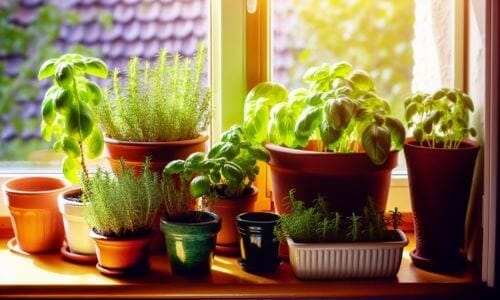
Spring is in the air, and it’s time to turn our attention to gardening! This year, I, Bertie, am also embarking on the delightful journey of creating my very own herb garden—especially designed for small spaces. So come along with me and we'll have fun together!
From choosing the right spot to designing a personal herb oasis, join me as we immerse ourselves in a world of fragrant and flavorful herbs that are sure to spice up our culinary adventures.
We'll even explore herbs with medicinal properties that more folks are turning to these days.
Table of Contents
- Starting Your Journey
- Designing Your Oasis
- Aromatic Kitchen
- Balcony & Patio Haven
- Indoor Gardening
- Themed Gardens
- Eco-Friendly Growing
- Companion Planting
- Perennial Favorites
- Maximizing Space
- Irrigation Tips
- Harvesting & Preserving
- Attracting Pollinators
- Herbs in Landscaping
- Summary & FAQ
Starting Your Journey
Launching our "garden of herbs" journey is exciting. I know it will be a learning and rewarding experience for me as I've never focused on herbs specifically. I hope it will be fun and rewarding for you as well!
First, it’s all about choosing the right spot, deciding whether to start from seed or plant, and preparing the soil for healthy growth.
I'm planning on doing a little of both - starting some from seed and others from plants.
Let's dive into the essentials of starting an herb garden, focusing on the initial steps of planting and nurturing herbs to flourish. We'll have other articles that will delve into much deeper detail of these topics as we work along.
Choosing the Right Spot - Where and How!
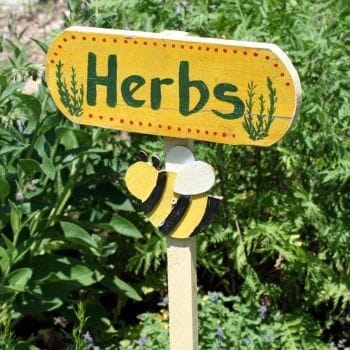
A critical first step in our journey for growing herbs is selecting the optimal location, whether it be in containers for a more flexible arrangement or directly in your yard for a traditional garden setting. Here are some factors to consider for both:
- Most herbs flourish in sunny spots, so for container gardens, choose a bright spot on a patio or windowsill, and in yard gardens, an open area that receives plenty of sunlight.
- South-facing spaces to grow herbs are typically best for both container and yard gardens, as they get the most sun exposure throughout the day.
- If your residence doesn't get much natural light, think about using mirrors or other shiny surfaces to bounce more light onto your container garden.
- For gardens in the yard, find a spot that gets the least amount of shade from nearby buildings and trees.
- Remember that container gardens can be moved to suit changing sunlight patterns, while yard gardens should be planned with consideration for the shading effects of permanent structures and the changing angle of the sun throughout the seasons.
Both container and yard gardens will benefit from these considerations, ensuring your herbs have the right environment to grow and thrive.
I'm going to use a mixture of both since I am limited on space for a yard garden but can at least have a small one.
Seed vs. Plant: The Optimal Starting Point
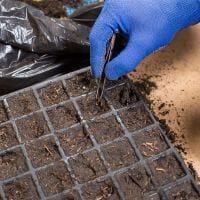
Choosing seeds or young plants as the starting point for your garden is an important decision that can significantly impact the garden's productivity.
Seeds provide a wider variety in selection and can be more cost-effective, especially for annual herbs that complete their life cycle within a single season.
They also allow for an extended harvest season, as you can sow seeds in intervals for a continuous supply.
For example, herbs such as basil, cilantro, dill, and parsley are known to germinate and grow quickly, making them ideal candidates for seed starting.
These herbs also tend to be more cost-effective when grown from seeds due to their fast-growing nature and the abundance of seeds in a single packet.
In contrast, some perennial herbs, which return year after year, are often better to purchase as young plants. This is because they can take longer to establish from seed and require more time to mature before you can begin harvesting.
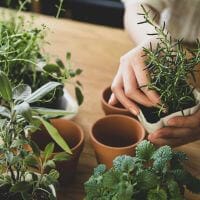
Herbs like rosemary, thyme, oregano, sage, and tarragon are classic examples where starting with a plant can be more practical.
They tend to be hardier when purchased as young plants and will provide a quicker return as they can be harvested sooner than those started from seeds. I've had rosemary in my yard and it is quite a hardy plant and oh-so-good in a stew!
Additionally, certain herbs have a reputation for being finicky when grown from seeds.
Herbs such as lavender and mint, are frequently recommended to be started from cuttings or transplants to ensure better survival rates and more consistent growth.
Any local hardware stores will have smaller plants for transplanting.
Ultimately, the choice to grow herbs from seeds or plants depends on your gardening goals, patience level, and the particular herbs you wish to grow.
By understanding the growth habits and needs of each herb, you can make an informed decision that leads to a flourishing and productive garden.
Soil Matters: Preparing for Healthy Growth
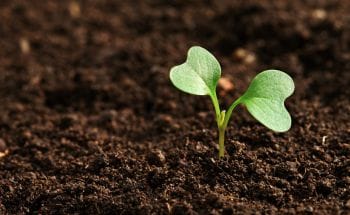
Preparing the soil is vital. Herbs require nutrient-rich soil to support their growth and flavor development.
Adding a small amount of organic matter, such as compost, to the soil can effectively enrich nutrient content without compromising drainage properties.
A well-drained soil mix usually includes a balanced combination of organic matter and coarse materials like sand or perlite.
Remember, containers used for growing herbs should have proper drainage holes to prevent potential root diseases so you will have healthy plants.
Designing Your Own Herb Oasis
A well-designed herb garden can be both visually appealing and functional. From rock gardens and vertical arrangements to vertical garden borders and themed gardens, the possibilities are endless.
So for fun, let's delve into a few inventive design concepts for your consideration.
Raised Bed Revolution
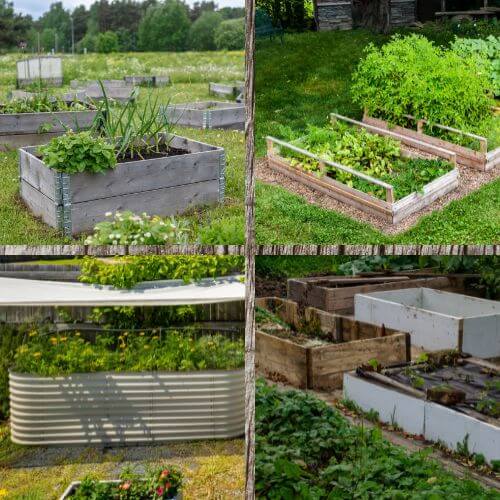
Raised beds are a great addition to any garden. especially for herbs. They create optimal soil conditions for planting herbs and are especially useful if your garden soil is heavy and poorly draining.
Raised beds ensure sufficient room for quality soil and proper root development to grow herbs.
You can construct durable raised garden beds from recycled materials like:
- old bricks or concrete cinder blocks
- stock tanks (if you live near a farm that might have them)
- whiskey barrels
- pallet collars or just about anything that can hold your planting soil
- use your own container, like an old wash tub or old planter
Have fun going to yard sales to find your containers!
Tip:💡 Strategically positioning taller herbs towards the back and smaller herbs towards the front of herb plant maximizes space utilization and visual appeal.
Container Cultivation

Planting herbs in containers for outdoor use is a versatile and space-saving approach.
Terra cotta is the one pot that is excellent for growing herbs as they help regulate moisture levels. Herbs grown in larger pots are more resilient and can maintain themselves better than those in smaller ones.
Just be sure to allow for air circulation around your plants.
Plus, using a variety of mismatched pots in different styles and sizes can be unique and visually appealing to your entire garden. After all, upcycled containers are eco-friendly and fun to reuse!
Artistic Arrangements
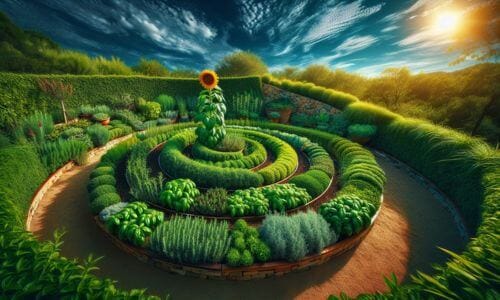
Your garden can be more than just a culinary resource; it can also be a work of art. Here are some creative herb garden ideas:
- Spiral gardens: serve as a stunning focal point, catering to the specific needs of different herbs.
Collection of mismatched pots: creates an eclectic and visually stimulating display.
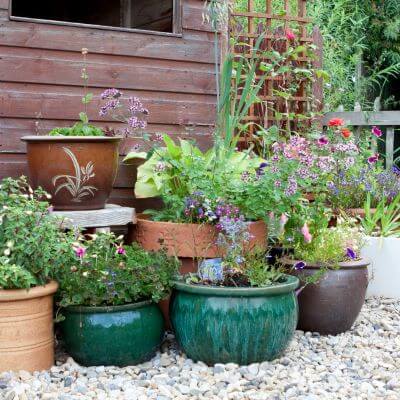
Tiered planters: provide practical and artistic pyramid-style arrangements.
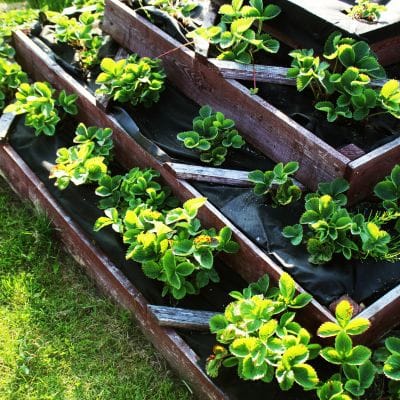
So feel free to get creative and design a garden that reflects your personal style.
The Aromatic Kitchen Garden
Imagine having a selection of fresh herbs at your fingertips whenever you’re cooking. An aromatic kitchen herb garden makes this dream a reality. Choose herbs that you frequently use in cooking, like:
- rosemary
- basil
- thyme
- oregano
Your culinary garden space should receive a minimum of six hours of direct sunlight daily. Keep in mind, delicate herbs like basil might require shielding from the intense afternoon sun. Fresh herbs always add such a marvelous flavor to those special dishes!
Whether you're a beginner gardener or a seasoned gardener, I would really love for you to take on the challenge of not buying herbs from the grocery store anymore, but growing your own. I know you're going to love the experience. You can get started right away and have tons of herbs all season long! Nicole Burke https://www.gardenary.com/blog/how-to-grow-herbs-in-a-small-space
Balcony and Patio Herb Haven
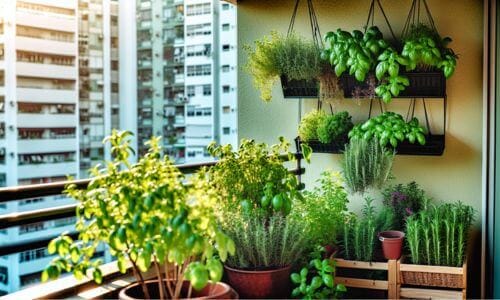
Don’t have a backyard? No problem. You can transform your balcony or patio into a lush herb garden. Using a variety of containers, you can grow adaptable herb varieties like:
- basil
- lavender
- lemon balm
- mint
- parsley
- summer savory
These are all grown in similar soil, water, and light conditions.
Make sure your balcony herbs receive ample sunlight and are safeguarded from harsh winds or rain. With the right care, your balcony can become a green oasis.
Indoor Herb Gardening Essentials
If outdoor garden space really is limited, don’t worry—you can still have a thriving garden by growing herbs indoors. Providing ample sunlight or employing grow lights is of utmost importance.
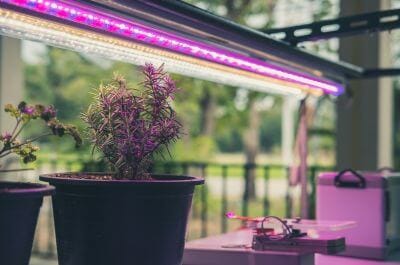
"You can grow herbs virtually anywhere in your small apartment because you don’t need natural light to grow herbs indoors.
Grow lights provide full-spectrum light to plants, unlike most home lighting. Grow lights usually have built-in timers, plug into wall outlets, and are available as floor and table lamps, clip-on lamps, or hanging lights. There are even self-watering grow kits with built-in grow lights." Raven Haynes https://www.avail.co/education/articles/starting-an-herb-garden-in-a-small-apartment
Choose a potting mix that is light, retains moisture, and is well-draining.
Different herbs prefer different temperature conditions; some thrive better in warmer environments, while others grow well in cooler spaces.
Remember, indoor herbs benefit from high humidity levels, which can be achieved by regular misting or using a humidity tray.
Themed Herb Gardens
Looking to add a personal touch? Consider creating a themed garden. Here are some herb garden ideas:
Tea garden: incorporating a variety of mints, chamomile, and lavender

Oriental garden: with lemongrass and coriander as the main highlights
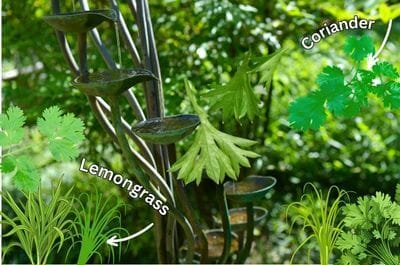
Italian garden: featuring basil and oregano
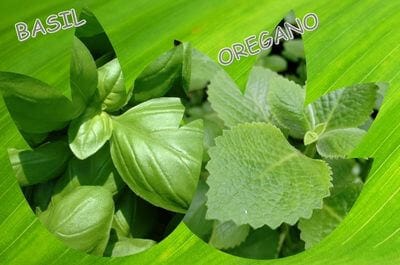
Whatever your culinary interests, there’s a themed garden to match.
Eco-Friendly Herb Growing
Embrace sustainable practices as you design your space. Repurposing items like old farm equipment, wheelbarrows, mason jars, baths, sinks, chimney pots, wooden barrels, and metal buckets can create unique and environmentally friendly planters for herbs.
Instead of using synthetic fertilizers, enrich your soil with organic compost.
And did you know that aromatic herbs like mint, oregano, and chamomile can repel various garden pests?
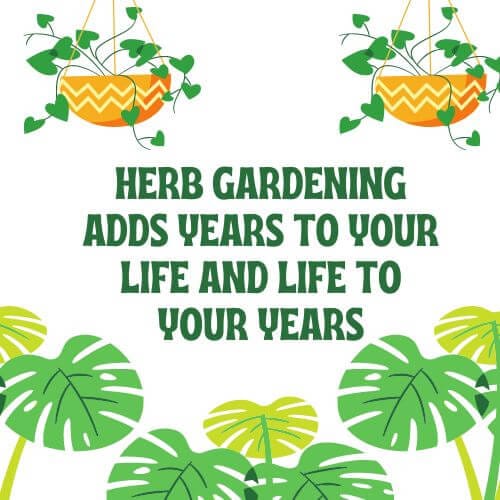
Companion Planting and Natural Pest Control
Pairing herbs with other plants for mutual benefits is known as companion planting. For instance, growing fennel with dill or rosemary with other aromatic herbs can enhance growth and deter pests. 🐛🪲🪳
Aromatic herbs such as mint, oregano, and chamomile can also deter various garden pests, reducing the need for chemical pesticides.
Year-Round Herbs: Perennial Favorites
Perennial herbs like chives, thyme, mint, fennel, oregano, lavender, and tarragon can often endure cold winters with appropriate care. Here are some tips to help them survive:
- Apply mulch such as straw or leaves to help maintain constant temperatures and minimize frost damage.
- Prune herbs back to 4 to 6 inches after the initial hard freezes.
- Avoid fertilization after August.
By following these steps, you can prepare your herbs for the colder months.
With the right care, you can enjoy your own herbs and even plant herbs year-round. (Depending, of course, where you are in the growing zone.)
Maximizing Small Spaces: Vertical and Hanging Solutions
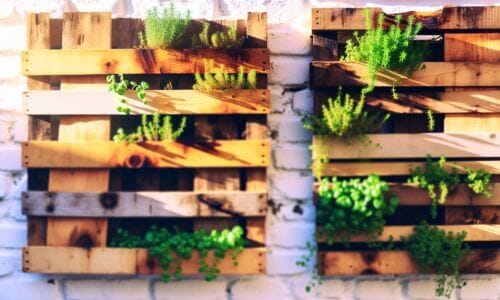
If space is limited, consider vertical and even hanging basket solutions. Wooden pallets can be upcycled into vertical herb gardens, and wall planters or hanging baskets can create a striking visual statement.
Other herb garden ideas include repurposing old furniture pieces and fixtures as planters, hanging pots, or part of a vertical gardening setup. With a little creativity, even the smallest space can become a lush herb garden.
Water Wisely: Irrigation Tips

It’s imperative to water your herb garden judiciously. Here are some guidelines to follow:
- Mediterranean herbs like rosemary and cilantro are more drought-tolerant.
- Herbs like mint, parsley, and basil need moderately moist soil.
- Herbs in pots may require more frequent watering than garden-planted ones due to faster soil drying. (Just be sure to have holes in the bottom of the container for proper drainage.)
Implement a watering routine during the cooler mornings to foster deep root soaking and use organic or water-soluble fertilizers to create a nutrient-dense environment. However, again, be sure you have well draining soil so you don't get root rot.
Harvesting and Preserving Your Herbal Bounty
Understanding the appropriate time and method to harvest and preserve your favorite herbs, is key. Here are some tips to help you:
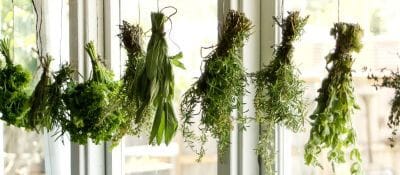
- The best time to harvest herbs is in mid-morning after the dew has evaporated.
- Harvest the herbs just before they flower for maximum flavor.
- You can dry sturdy herbs in small bundles or use a microwave for small quantities.
- Once dried, store herbs in airtight containers in a cool, dry, and dark area.
You can also freeze herbs with high water content in ice cube trays with water or oil.
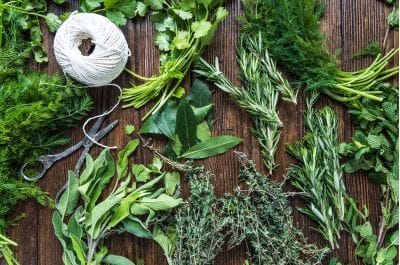
Attracting Pollinators to Your Herb Garden
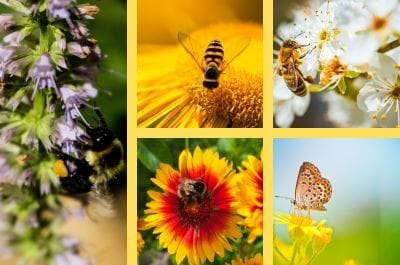
Attracting pollinators (we just love bees!🐝) can have a positive impact on the health and productivity of many herbs in your garden. Some flowering herbs that are effective at attracting pollinators and are aromatic plants include:
| Basil | Lemon Balm | Chives | Mint | Cilantro | Oregano
| Dill | Parsley | Lavender | Rosemary | Sage | Thyme
These flowering herbs have appealing flowers that can draw various pollinators to your fragrant garden. (Did we mention we just love bees?)🐝
Integrating Herbs into Landscaping

Herbs can be beautifully integrated into your garden landscapes. Leafy herbs such as lavender, lemon verbena, and parsley not only offer aromatic and visual appeal but can also aesthetically enhance garden landscapes.
Sage, French tarragon, and thyme have unique foliage and growth habits that make them suitable for designing contrasting textures and colors in the garden as beautiful herb garden ideas.
Summary

In conclusion, creating a beautiful, functional herb garden that elevates our culinary spaces will be a rewarding journey. With the right knowledge, we can successfully grow a variety of herbs, design our gardens creatively, and ensure their health and productivity.
We will have many other articles throughout this growing season introducing different herbs, like basil and lavender, and other herbs not mentioned in this article but are very interesting and fun to grow.
By the way, did you know that oregano, rosemary, and basil can be grown together as a trio, are good for you, and belong to the mint family? Ah, so much to learn!
Frequently Asked Questions
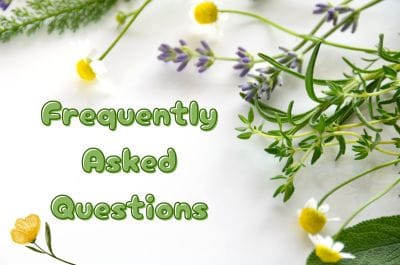
What is the best layout for an herb garden?
The best layout would be four beds, each a square yard in size, around a central feature like a sundial or a small round bed with a tall herb like Rosemary or Fennel. This design offers practicality and visual appeal in small space.
What herbs grow best together?
Sage, rosemary, thyme, and lavender grow best together as they have similar growing requirements and are complementary to each other. They prefer well-drained soil, full sun exposure, and infrequent watering.
What time of year do you start a herb garden?
You should start in the spring, once the danger of frost has passed. This is the best time to plant herbs in your outdoor garden or planter.
How can I choose the right spot for my herb garden?
Choose a south-facing spot with plenty of sunlight, and consider using reflective surfaces to enhance light if needed. Be mindful of any potential shading from nearby structures or trees.
Thanks for stopping by our bee hive! We hope you will stay with us as we journey through the world of growing herbs in our little corner of the world!
We'll have more information, tips, how-to articles coming up soon so subscribe to be sure you get the newest and latest!

Bertie
Before you leave, if you haven't already done so, please subscribe so you will be the first to see reviews you can rely on.


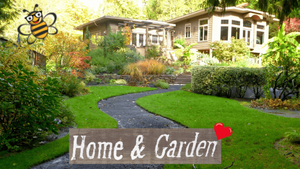







Member discussion